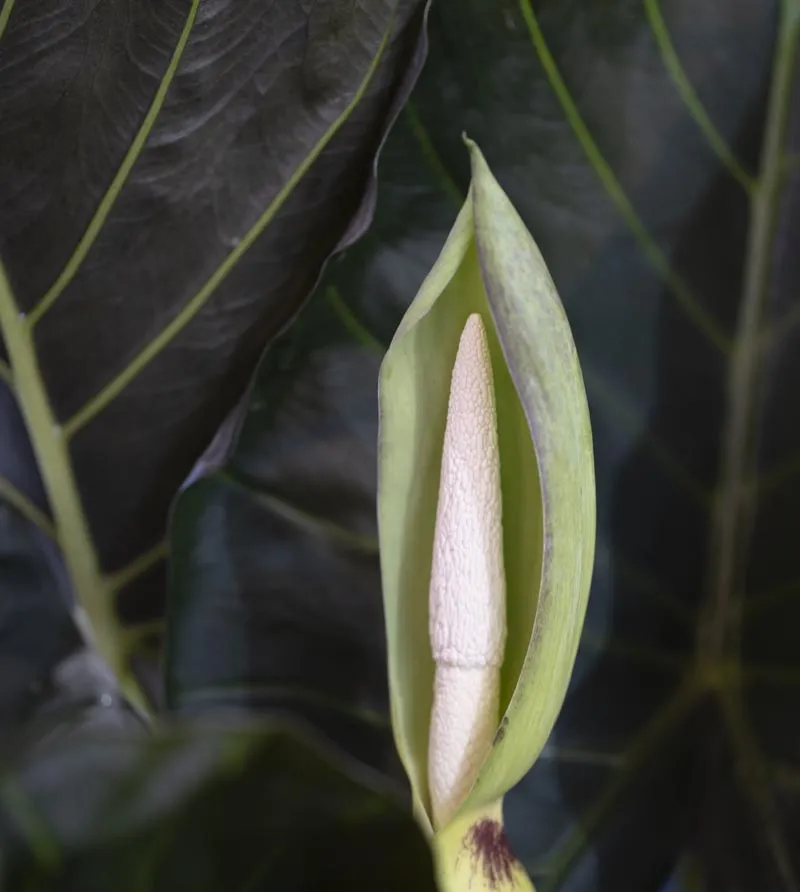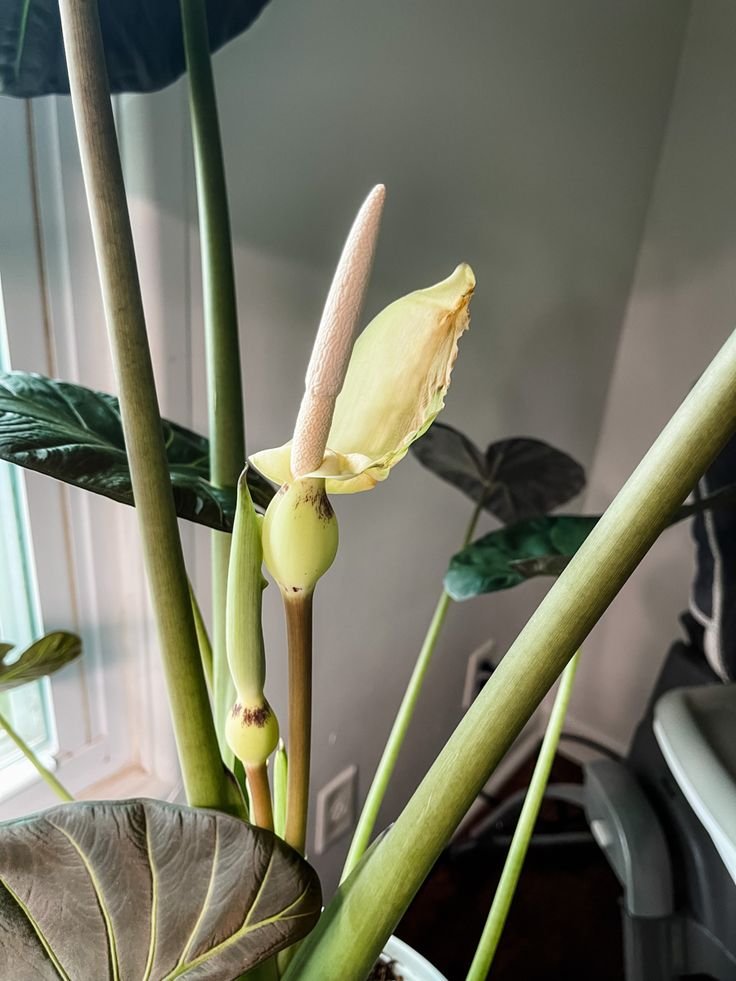ALOCASIA ‘REGAL SHIELDS’
Alocasia odora x Alocasia reginula ‘Black Velvet’
PARENTAGE: Alocasia odora (ovule parent) x Alocasia reginula ‘Black Velvet’ (pollen parent)
SYNONYMS: Alocasia ‘Reginora’, Alocasia x reginora
HYBRIDIZER: LariAnn Garner (Aroidia Research) - crossed in 2007 and registered under US Plant Patent PP27050
VARIEGATION: WHITE, YELLOW
DESCRIPTION: One of the most prolific hybrids currently in cultivation, Alocasia ‘Regal Shields’ is a prime example of heterosis
Alocasia ‘Regal Shields’ reaches a height of 30 cm to 1.2 m and a width of 61 cm to 91 cm, displays an upright habit and shows moderate resistance to spider mites. It is cold hardy to USDA Zone 10 and has fleshy roots. Preferred methods of propagation include tissue culture from meristem tissue, corms, or offsets. The circular corms have a slightly glossy apex, a bark-like base, and are about 3 cm in diameter and 6 cm in height, colored a blend of 166A and 166B with an underlay of N137A, while the oblong cormels have a dull, bark-like texture and are about 4 mm in width and 3 mm in height, colored 166A. The plant has a moderately vigorous growth rate with a rhizome-like trunk at the base of the petioles as it ages.
The leaves are heart-shaped, single, deeply cut at the base with lobes about 5 cm in size, and the leaf tip points downwards. The pinnate venation is conspicuous on both leaf surfaces, with young leaves being 144C and maturing to 141C on the upper surface, while the lower surface turns from 144D to N187A, becoming more noticeable. Leaf margins are slightly undulate, and the leaves are attached to the stem via petioles and arranged alternately. The coriaceous and glabrous leaf surface is dull on top but satiny below, held horizontally to slightly upward. Young leaves are 143A lightly suffused with 187A on the upper surface, while mature leaves are 139A suffused with 187A on top and N187A to N187C lightly suffused with 151B on the lower surface. Leaves can grow up to 23 cm in length and about 15.2 cm in width. The erect to semi-erect petioles are about 23 cm in length, with a glabrous surface colored 14.4A to 144C with tiny spots of N187A, and the rhizome-like base is rough and paper-like, colored a blend of N167B and 163A to 163C.
INFLORESCENCE: The inflorescence consists of a spadix surrounded by a spathe with only female flowers developed, measuring an average of 9 cm in length and 2 cm in diameter. The inflorescence buds are lanceolate at the upper portion and elliptic at the lower, colored 143B with a slight infusion of N77C. It emits an acidic fragrance and blooms intermittently throughout the summer, with individual flowers lasting about 2 to 3 weeks. There are sets of 3 or more flowers at a time, with an average of 70 female flowers per spadix. The hooded spathe acts as a bract, with the free portion wedge-shaped, and the entire arrangement lasts 5 to 7 days. The colors of the spathe vary from 143B when opening to 10D before shriveling. The spadix is made up of different zones: the male zone is cylindrical, the sterile zone has an indented center, and the female zone is conical with raised, irregular-shaped stigmas, all colored 145C. The peduncle, which supports the inflorescence, is durable and strong, growing up to 16 cm in length at a 20° angle with a glabrous surface blending 145A and N77C.
The reproductive organs, the gynoecium, consist of stigmas about 1.5 mm in diameter, colored 145C, and rounded ovaries about 2 mm in diameter, glossy and colored 145B. The androecium has flattened, circular stamens about 1.5 mm in diameter, colored 158C. No fruit or seed production has been observed to date.
Several growers have experimented with Alocasia ‘Regal Shields’ in hopes of creating new hybrids by crossing its inflorescences with those of other plants. However, despite these attempts, the inflorescences have failed to produce viable offspring, suggesting that 'Regal Shields' may be sterile. This sterility could be attributed to a mismatch in the number of chromosomes between 'Regal Shields' and its intended hybrid partners, a condition known as allopolyploidy when involving different species with varied sets of chromosomes. Allopolyploidy can result in offspring with an irregular chromosome count, which disrupts normal cell division and can lead to infertility.
Alternatively, the sterility may be due to aneuploidy, which is the presence of an abnormal number of chromosomes within 'Regal Shields' itself, not necessarily due to a cross. Aneuploidy often arises from errors in cell division and can result in an uneven distribution of genetic material. This leads to unbalanced gene expression and physiological functions, often rendering the plant unable to produce fertile gametes.
In either case, whether due to allopolyploidy or aneuploidy, the end result is a plant that is unable to participate successfully in sexual reproduction, thereby limiting its use in breeding programs aimed at creating new Alocasia cultivars.
Photo by @zz.plants_







